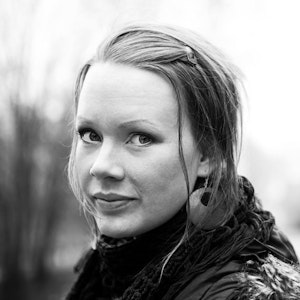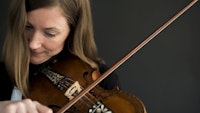Field of study: Performance Practice
Hilde Halvorsrød: Webern and the Voice.

What kinds of textual and musical meanings are at play in Webern's vocal music? What is the role of the singer?
Summary
This thesis posits that Anton Webern’s Lieder (opp. 3, 4, 12, 23 and 25) present something of an aesthetic paradox. Webern has set his chosen, rather traditional, poems to music in line with conventions of the German Lied tradition – without omissions or repetitions, moulding the formal compositional features of the songs on the stanzas, verse lines and syntax of the poem. Yet, his departure from the tonal system, his angular melody lines, wide vocal leaps and fragmented accompaniment constitute a radical contrast to the familiar soundscape of a Lied – which in turn creates a possible distance between music and text.
This contrast has a significant impact on the listening experience. Arguably, a traditionally set ext sung by a singer appears as a coherent narrative, or what Edward T. Cone in The Composer’s Voice calls the “vocal persona” of a song. In comparison, the surrounding musical landscape of Webern’s Lieder appears less coherent and rather unpredictable – at least without prior compositional analysis. Thus, text and music are, so to speak, pulling the listener’s attention in different directions.
When listening to the complete catalogue of available recordings of Webern’s Lieder, the suggested aesthetic paradox becomes particularly prominent, as there are major variations in the 17 singers’ different performances – especially regarding their treatment of the text. To what extent the singers emphasize the words, the melody line, each individual note or the linguistic sonorous material, and whether they appear to address the listener in some way or other to “tell the story” of the poem, create several rather idiosyncratic iterations of Webern’s songs, ultimately altering what the music seems to express.
By analyzing and comparing the vocal performances of the mentioned 17 singers, this study will look into the following questions: What kinds of textual and musical meanings are at play here? How do the various meanings play out in the different performances? And additionally, what is the role of the singer? As opposed to all other musical performers, singers have to combine the pronunciation of text with the production of musical sound and balance the interpretation of the text with the interpretation of musical notation. What does this ‘additional task’ entail, in terms of conveying and portraying the stories, moods, characters and emotions of the song’s text?
Two closely related pairs of terms will form a basis for the analyses and the subsequent discussions. First, Walter Benjamin’s distinction between “what is meant” and the “way of meaning it” in a text, i.e. the thematic meaning content versus formal structure, syntax and linguistic materiality, as discussed in Die Aufgabe des Übersetzers (The Task of the Translator). Secondly, the virtually analogous terms used by Theodor W. Adorno in the posthumously published book Zu einer Theorie der musikalischen Reproduction (Towards a Theory of Musical Reproduction), as he, in a comparison between musical performance and acting, distinguishes between the “melodic-mimic” or “melodic-gestural” and “meaningfulsignificative” levels of meaning in a dramatic text.
These terms and the discussions they entail apply to several key issues in this study, including, but not limited to: The internal relationship between the poem’s form and content, the song text as a representation of the poem’s “what is meant” and the musical setting as a “way of meaning” it, and the balance between the singers’ musical interpretation and his or her conveyance of the text and its potential meanings.
Articles relevant
Published: Oct 3, 2018 — Last updated: Nov 1, 2024
